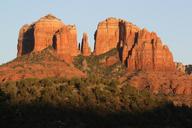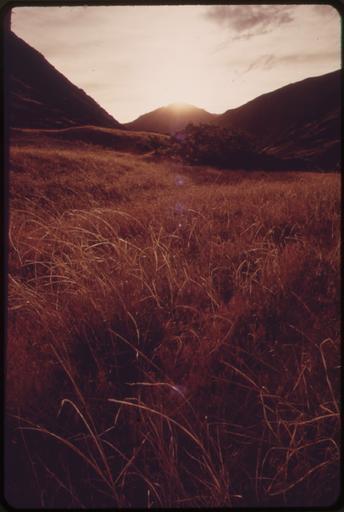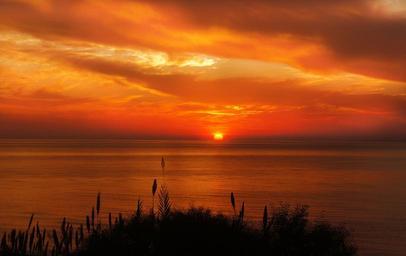Introduction
In the realm of photography, there exists a unique interplay between reality and imagination, where the tangible merges with the ethereal. One such avenue that presents itself is the exploration of reflections on wet ground. This approach not only captures stunning visuals but also serves as a metaphorical canvas for introspection. The notion of “Reflections on Wet Ground as a Path to Introspection” encapsulates this journey—a journey through murky tones, shadowy reflections, and fleeting moments that beckon us to delve deeper into our own narratives.
Through this article, we will embark on an in-depth exploration of how wet surfaces can reveal much more than just their mirrored images. From the nuances of liminal worlds in photography to the haunting beauty found in urban decay, we will uncover 25 distinct aspects surrounding this theme. Each section will provide insight into how these elements contribute to an introspective mood, guiding both photographers and viewers alike along a reflective path.
Reflections on Wet Ground as a Path to Introspection
Wet ground often serves as a reflective surface, offering a dual reality where the actual world merges with its shadowy counterpart. This phenomenon allows photographers to explore themes of identity, existence, and emotion—elements deeply intertwined with introspection. When one captures an image of reflective puddles after rain, it not only reveals what lies above but also invites contemplation about what remains unseen.
The intricate dance between light and water creates an atmosphere ripe for storytelling. Consider how backlit subjects cast elongated shadows against dark walls or how solitary figures emerge from foggy landscapes; these compositions evoke feelings of mystery and existential reflection. In this way, wet textures become more than mere physical properties; they symbolize transitional spaces—those moments in life when we stand at the threshold between who we are and who we aspire to be.
Exploring Liminal Worlds in Photography
Liminal worlds in photography refer to those transitional spaces that exist between two realities—such as day and night or presence and absence. They embody an ethereal atmosphere that captivates viewers, inviting them into contemplative realms filled with possibility.
Photographers often seek out rare locations where these liminal experiences can be captured authentically. A round tunnel enveloped in twilight tones can create an evocative scene where shadows play hide-and-seek with fleeting light. Here, each click of the shutter immortalizes not just an image but a moment suspended in time—a reminder that life itself is a series of transitions.
The Artistry of Tunnel Photography
Tunnel photography is a prime example of how confined spaces can evoke vast emotions. These narrow passages often represent uncertainty or confinement yet simultaneously promise escape into the unknown.
When shooting within tunnels adorned by aged surfaces and urban decay, one can achieve moody aesthetics that resonate deeply with viewers. Shadows stretch across wet ground while mysterious figures may emerge from obscurity—each element contributing to visual storytelling that reflects our shared human experience.

Creating Atmospheric Portraits in Tunnels
Portraits taken within tunnels can convey powerful narratives through atmospheric composition. By incorporating backlit subjects against shadowy reflections on wet ground, photographers create immersive environments that highlight character in shadow while simultaneously evoking emotions tied to solitude or longing.
Consider capturing individuals dressed in long coats or hats; these elements add layers of intrigue while enhancing the overall moodiness inherent within tunnel photography’s dark walls. The result? A hauntingly beautiful portrait teeming with depth—an invitation for viewers to ponder their own journeys amidst similar liminal thresholds.
Murky Tones: Mood-Setting Elements
Murky tones play an indispensable role in setting moods within photographs focused on reflective surfaces like wet ground. These shades—often characterized by deep greens or grays—evoke feelings associated with introspection: melancholy, nostalgia, mystery—all inviting contemplation about life’s complexities.


Utilizing murky tones allows photographers greater freedom when crafting narratives around their subjects’ emotional states—their expressions mirroring inner conflicts while being framed against moody backdrops rich with texture.
Earthly Hues: Connecting Us Back to Nature
In contrast to murky tones lie earthly hues that foster connections between humanity and nature itself. Rich browns mingling harmoniously with greens remind us of our roots—the importance of grounding ourselves amidst life’s chaotic rhythms.
Photographing water-soaked landscapes where earthy hues dominate encourages mindfulness; every reflection becomes symbolic—a gentle nudge toward remembering our fundamental ties to Mother Earth even amid urban settings marked by decay or desolation.
Dark Walls: The Power of Contrast
Dark walls serve as stark canvases upon which stories unfold through shadow and light interplay—an essential aspect when exploring reflections on wet ground as they enhance contrast dramatically within compositions.
Utilizing dark backgrounds against brightly lit subjects draws viewers’ gazes inward while igniting curiosity about underlying themes present within each photograph—a push toward deeper understanding rather than mere observation alone.
Shadowy Reflections: Capturing Dualities
The concept behind shadowy reflections epitomizes duality—a visual representation showcasing opposing forces coexisting harmoniously side-by-side (e.g., light vs dark). Photographers harness this idea by manipulating angles creatively; resulting images beckon audiences closer whilst challenging them intellectually regarding meaning derived from juxtaposed elements depicted https://jsbin.com/cutigocalu therein (i.e., transient vs permanent).
The Role of Wet Textures in Visual Storytelling
Wet textures breathe life into photographs featuring reflective surfaces—they invite tactile sensations akin to experiencing life firsthand rather than passively observing it unfold before our eyes.
Photographers skilled at utilizing wet ground effectively translate these sensations into evocative narratives filled not only with imagery but also emotion driven by reminiscences tied directly back towards personal experiences shared collectively among humanity throughout history itself (e.g., rainstorms evoking childhood memories).
Mystery in Photography: Creating Enigmatic Figures
An air of mystery permeates photographs featuring enigmatic figures positioned strategically within frames—they lend themselves beautifully toward introspective dialogue between artist/viewer alike prompting inquiries regarding intention behind placement choices made during shooting sessions (i.e., were they intended merely for aesthetic purposes? Or do they hold deeper significance?)
Using techniques such as subtle contrast enhanced by fleeting light enhances ambiguity around characters portrayed allowing space for personal interpretation thus further enriching viewer engagement levels beyond superficial appreciation alone!
Urban Decay: Forgotten Spaces as Inspiration
Urban decay manifests visually through forgotten spaces left untouched over time; dilapidated buildings adorned by creeping vines serve as poignant reminders reflecting societal changes experienced across generations past-present alike encouraging contemplation regarding impermanence inherent within all things encountered daily throughout modern life!
These striking visuals often capture attention immediately due primarily due their haunting beauty which contrasts sharply against vibrant cityscapes thriving elsewhere nearby creating compelling juxtapositions worth exploring artistically!
Visual Storytelling Through Atmospheric Compositions
Atmospheric compositions serve vital roles when crafting visual stories steeped heavily within themes revolving around introspection since they provide context surrounding subject matter explored thereby enhancing overall narrative impact exponentially!
By combining elements such as ethereal atmospheres produced via creative lighting techniques alongside thoughtful framing choices executed purposefully artists communicate emotions tied closely back towards audience members’ individual experiences allowing deeper connections flourish organically overtime transcending mere aesthetics alone!
Reflections: An Invitation for Contemplation
At its core lies a profound invitation encouraging contemplation regarding self-identity & purpose amidst external chaos encapsulated beautifully through artful representations depicting reflections captured off glistening surfaces left behind post-rainfall conditions experienced ubiquitously worldwide!
Thus emerges realization recognizing potential existing within every droplet resting atop pavement awaiting discovery leading ultimately towards transformative journeys unfolding before very eyes!
FAQs
1. What does "liminal world" mean in photography?
A liminal world refers to transitional spaces where two states intersect—like dusk transitioning into night—and is often used metaphorically in photography to explore themes surrounding identity and existence.
2. How do you achieve moody aesthetics using wet ground?
To achieve moody aesthetics using wet ground photographs should focus on utilizing subdued colors (murky tones), dramatic lighting (backlighting), and capturing atmospheric weather conditions (rain/fog) that enhance emotional resonance within images created capturing them thoughtfully reflectively overall intention behind choices made during shooting sessions too!
3. Why are reflective puddles significant for introspection?
Reflective puddles allow individuals viewing photographs containing them ponder deeper meanings regarding personal experiences.